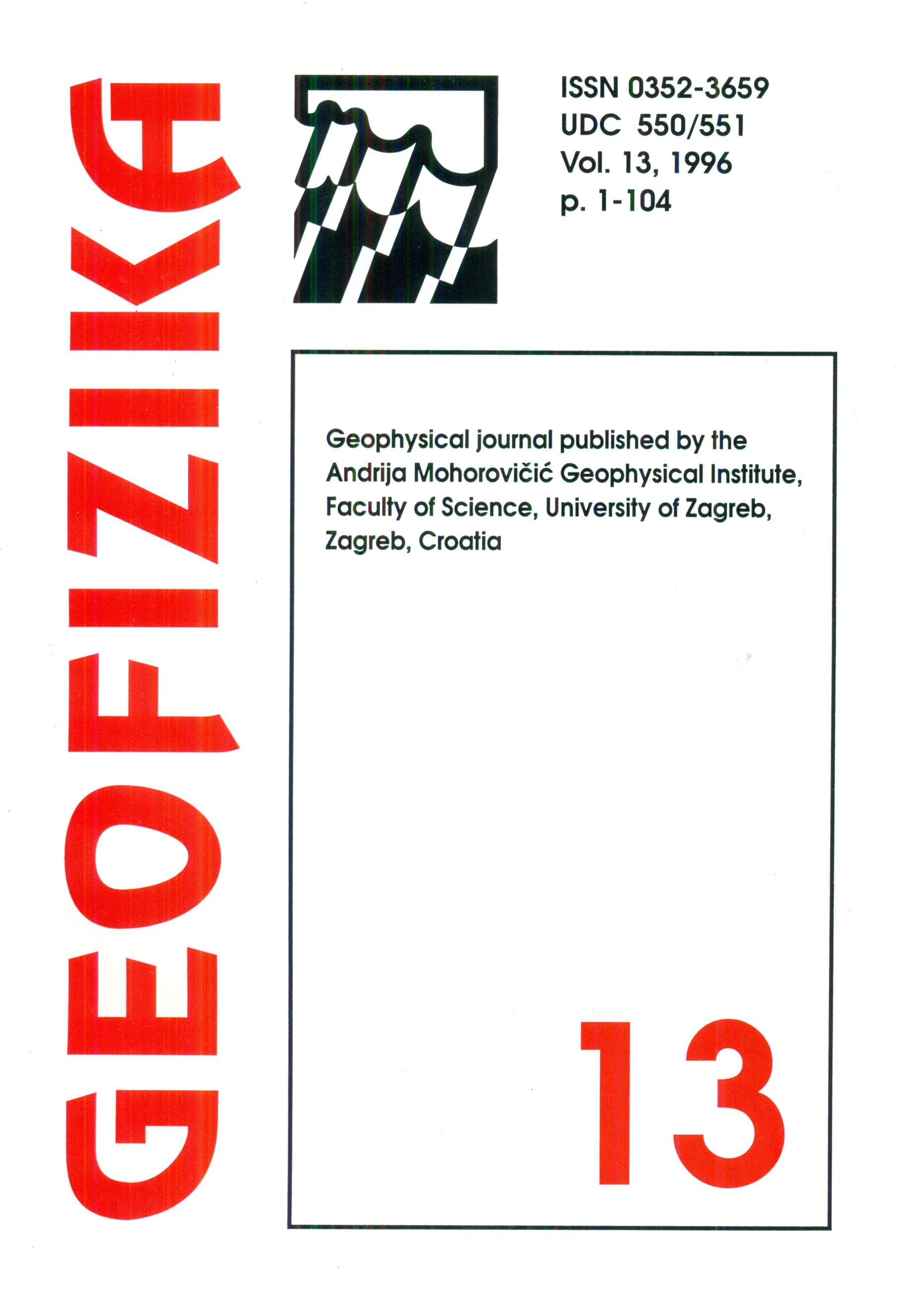Numerical simulations of dissipation of dry temperature inversions in basins
Keywords:
Numerical simulation, dry temperature inversionsAbstract
A hydrostatic mesometeorological model APIKA (Vrhovec, 1991) was improved by a new turbulence parameterization using a complete prognostic equation for the turbulent kinetic energy with both horizontal and vertical advection of turbulent kinetic energy. Horizontal diffusion of momentum and heat by turbulence is explicitly included.
Three different forcing of temperature inversion layer dissipation in basins were studied: dissipation due to diabatic (thermal) forcing, dissipation due to the advection of colder air and dissipation due to wind shear. We show that in winter time the dissipation due to the cold air advection and dissipation due to increasing wind speed aloft are efficient enough to cause mixing of deep cold air lakes while irradiation thermal forcing at 45°N in deep basins is often insufficient to dissipate the inversion in deep basins when ground is cowered with snow.
Downloads
Published
Issue
Section
License
Copyright (c) 2021 Geofizika journal

This work is licensed under a Creative Commons Attribution-NonCommercial 4.0 International License.

